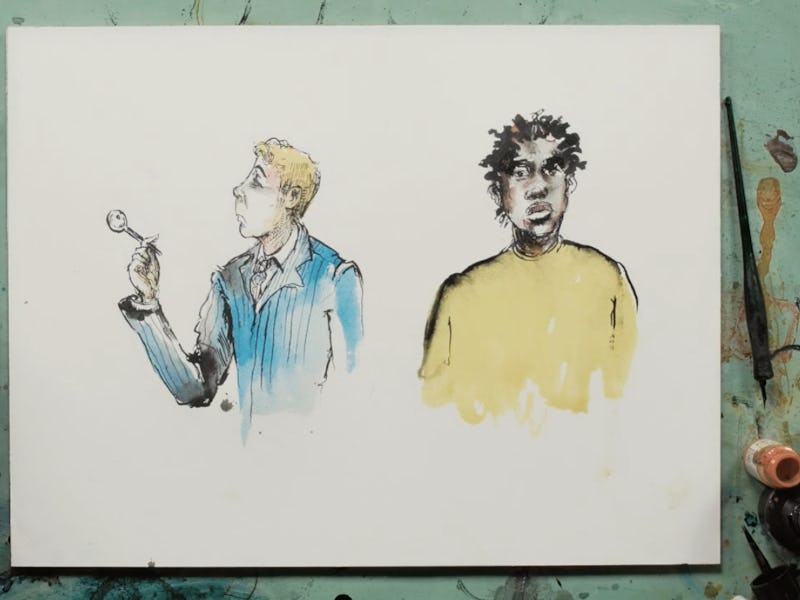Jay-Z Breaks Down the Racist Crack/Cocaine Divide
"To this day, crack is still talked about as a black problem."

The latest critic of the war on drugs is none other than rap legend Jay-Z, who blasted America’s drug policies as antiquated and racist in a gorgeous animated video for Thursday’s New York Times. In the op-ed, the rapper and self-admitted former drug dealer makes one thing clear: Peddling the same drug can incur very different punishments, depending on the color of your skin.
To illustrate his point, Jay-Z discusses cocaine and crack, which persistent cultural stereotypes have labeled as “white” and “black” drugs, respectively. “The Feds made distinctions between people who sold powder cocaine and crack cocaine, even though they were the same drug,” he narrates, over a watercolor painting of two identical chemical structures. “The only difference is how you take it.”
"The Feds made distinctions between people who sold powder cocaine and crack cocaine, even though they were the same drug."
That he is slightly oversimplifying the chemistry of these drugs is beside the point. (Crack is a free-base form of cocaine, meaning the primary alkaloid is missing a proton; cooking up cocaine with baking soda drives the chemical transformation that makes crack cocaine). One is snorted, the other smoked, but both drugs get users incredibly — and often fatally — high. If the war on drugs is a war on the pursuit and sale of intoxication, then it doesn’t make sense to distinguish between two drugs that are so similar. The war on drugs, Jay-Z’s logic forces us to assume, can’t just be about keeping them out of nostrils and forearms and lungs.
He’s not the first person to have acknowledged racist treatment of the so-called war on drugs in recent months. In July, Virgin Group founder Richard Branson wrote an open letter calling attention to the origins of Richard Nixon’s 1971 war on drugs, which his advisors later revealed was meant to create and maintain certain stereotypes: Hippies smoked weed, blacks did heroin. The umbrella of “black” drugs came to include crack cocaine in the 1980s, as it became widespread in poor inner-city neighborhoods in New York, Los Angeles, and Miami. Which makes sense: Crack is cheaper than its pure counterpart. Its use became an epidemic that served to perpetuate the stigma manufactured by policymakers in the previous decade.
In 1986, Ronald Reagan doubled down on the chemical difference between the two substances — it comes down to the “100-to-1 quantity ratio” of cocaine to cocaine base — creating the basis for two very different penalization schemes, one that made it a lot easier to incarcerate black users.
And that’s exactly what happened. As Jay-Z notes in the video, the U.S. prison population has grown 900 percent since 1971; today, there are some 2 million prisoners in America’s jails, and by the Prison Policy Initiative’s estimate, over 60 percent of them are people of color.
Yet, as the video points out, the largely white users of powder cocaine and crack got off relatively scot-free. “The NYPD raided our Brooklyn neighborhoods while Manhattan bankers openly used coke with impunity,” he says. This deep-seated racial bias, he argues, is perpetuated today in the deeply ironic structure of the burgeoning legal-drug trade. Selling marijuana is becoming a highly profitable above-ground business option, but former felons, many of them black users once punished for possession, are barred from taking part.
Of course, the war on drugs is — literally and figuratively — not as black and white as the video puts it. Dealers and users come in varying shades of skin tone and degrees of culpability. But what Jay-Z has served up is a reminder of the often-overlooked issue at its core, which — entangled as it is with the Black Lives Matter movement — needs to take a more important role in the war on drugs, lest it truly become the “epic fail” the rapper insists it already is.